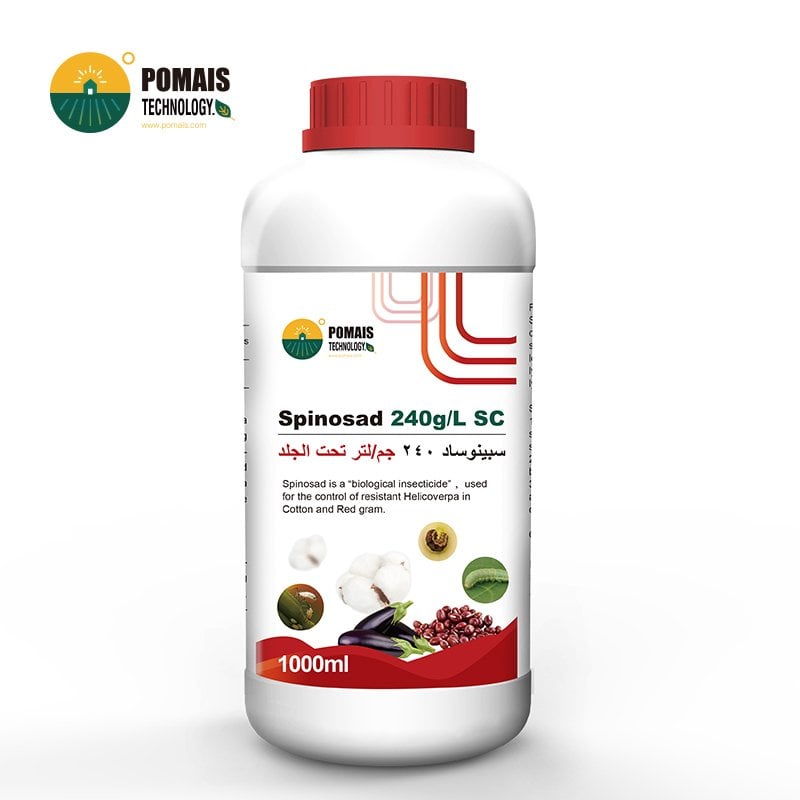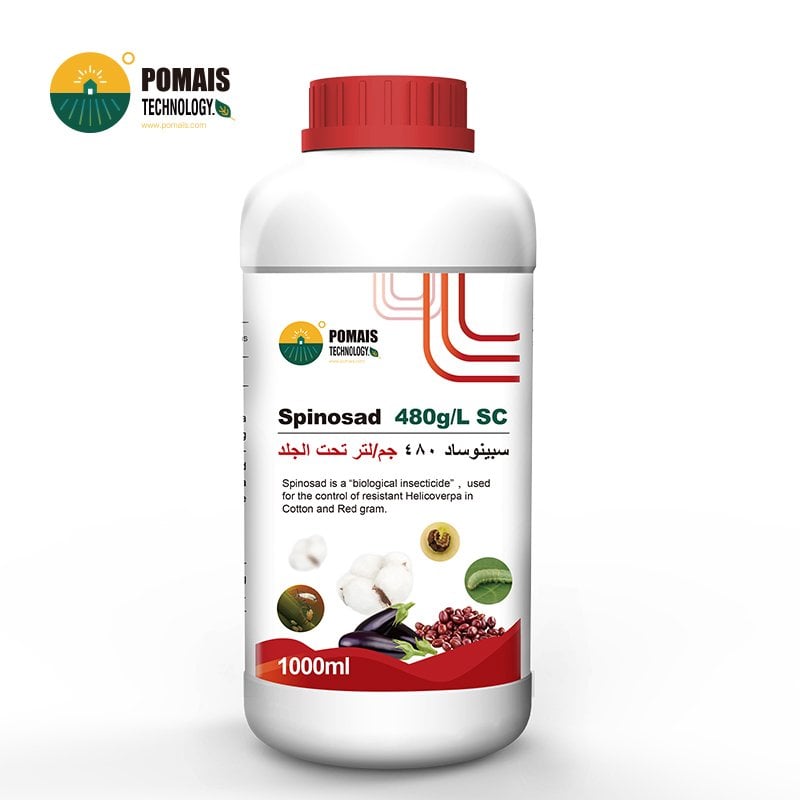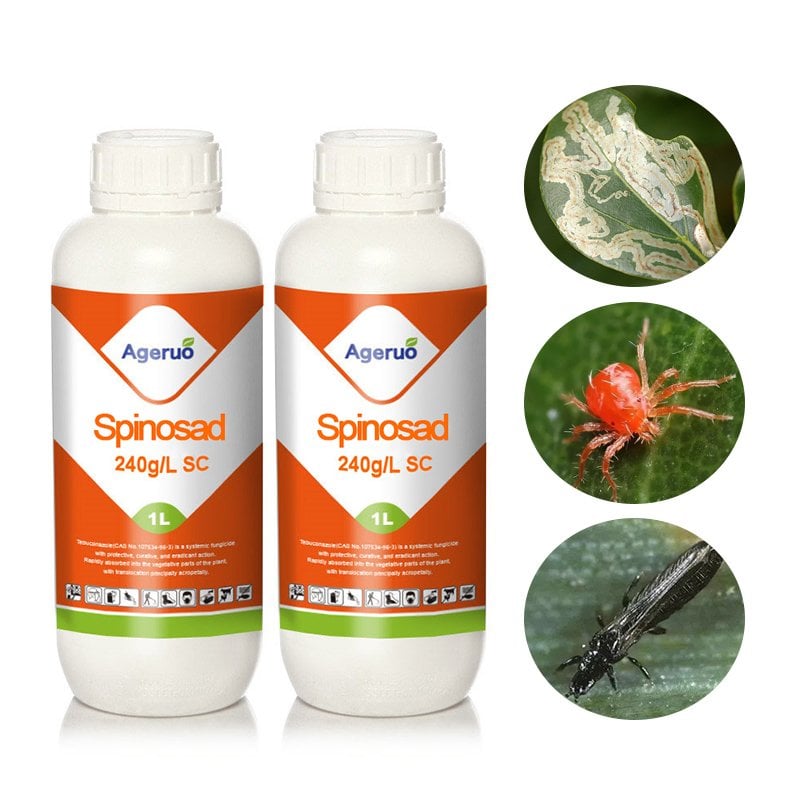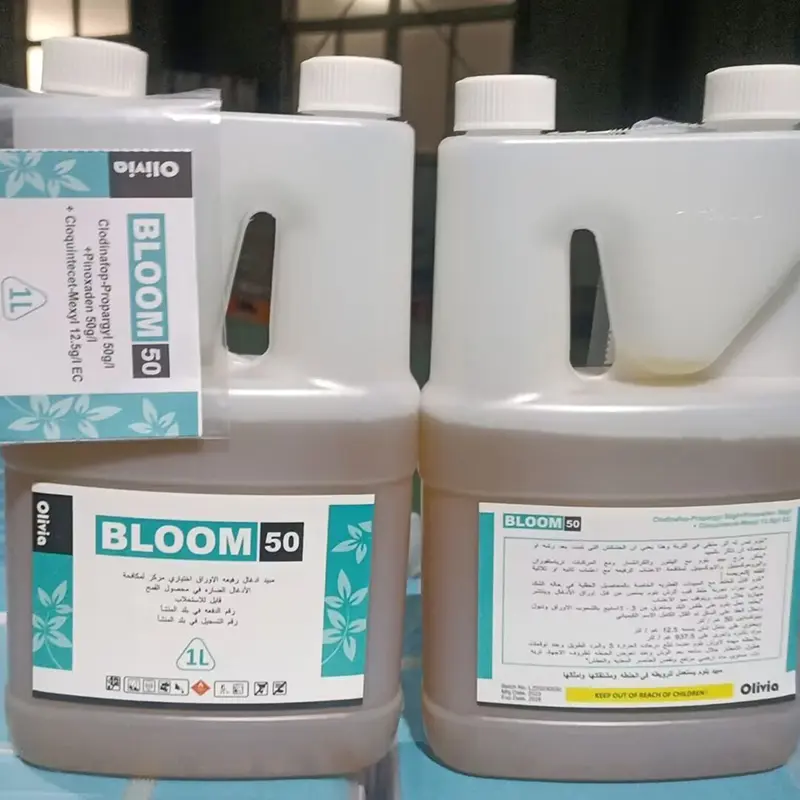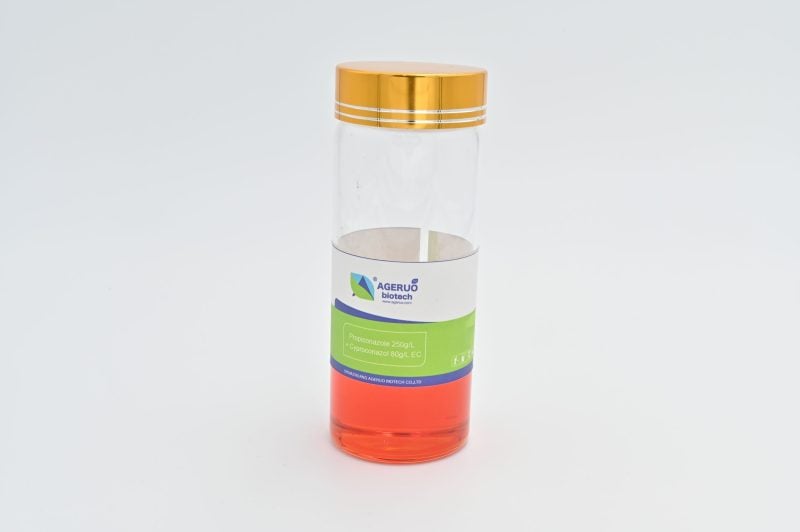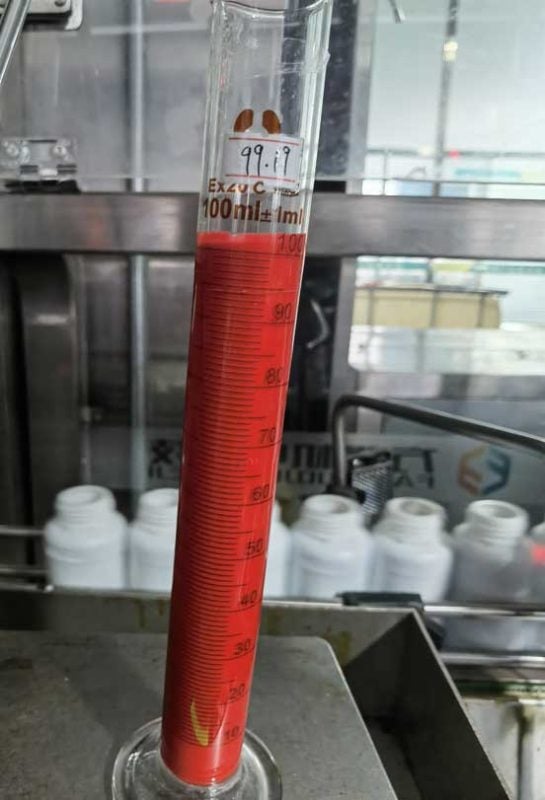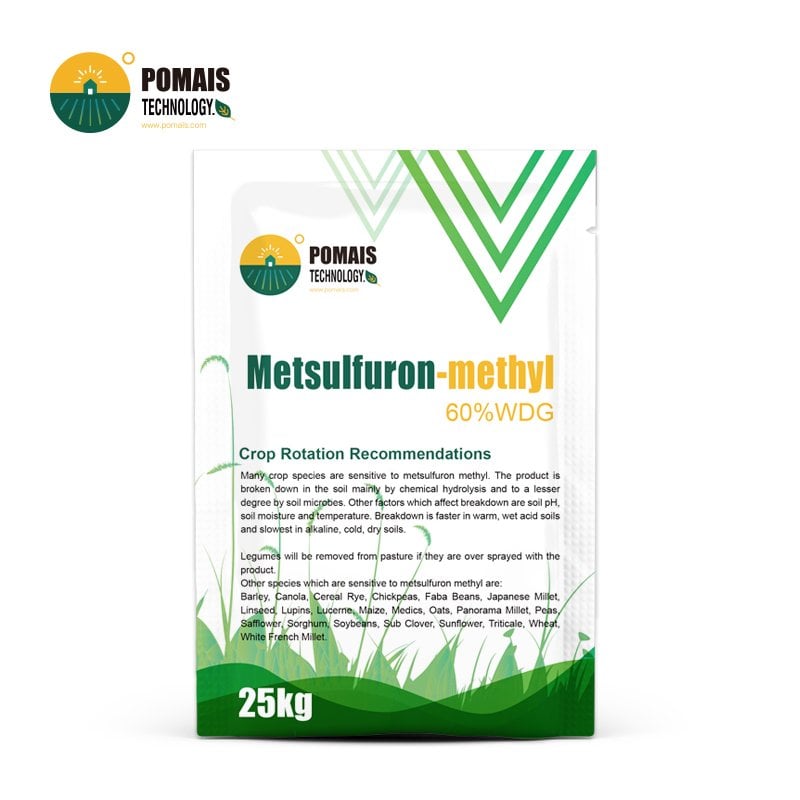Spinosad Insecticide | Spinosad Products for Lice | Pesticide Broad-Spectrum Insect Control
Versatile, Naturally Derived Pest Control for Agriculture, Health & Animal Care
Spinosad is a naturally derived insecticide produced by the soil bacterium Saccharopolyspora spinosa. It belongs to the spinosyn class of insecticides and is widely used in both agriculture and human health applications. Spinosad is effective against a wide range of chewing and sucking insects, including caterpillars, thrips, and leafminers, and is also used as a treatment for head lice.
- Designed for Professional Buyers & Bulk Orders
- This product is available for business purchase and large-scale distribution.
- We support custom packaging, labeling, and formulation to meet your market needs.
- Let’s build your brand together.

About Spinosad Insecticide | Spinosad Products for Lice | Pesticide Broad-Spectrum Insect Control
About Spinosad Insecticide | Spinosad Products for Lice | Pesticide Broad-Spectrum Insect Control
| Product Name | Spinosad (insecticide) |
| Active Ingredient | Spinosad |
| CAS Number | 168316-95-8 |
| Molecular Formula | C27H45NO7 |
| Target Pests | Leafminers, thrips, caterpillars, fruit flies, and other garden pests |
| Applicable Uses | Vegetables, fruits, ornamentals, and turf |
| Dosage | Typically 1-3 oz per gallon for spray applications; follow product label for specific rates |
| Mode of Action | Natural insecticide derived from fermentation; disrupts the nervous system of insects, causing paralysis and death |
| Common Formulations | Liquid concentrates, ready-to-use sprays, and granules |
| Common Concentrations | 5%SC, 240g/l SC, 480g/l SC |
| Packaging Types | 16 oz, 1L, and larger containers for commercial use |
| Product Keywords | Spinosad products, Spinosad insecticides, Spinosad pesticide, Spinosad for sale, Spinosad price, garden insect spray with Spinosad |
| Safety | Generally considered safe for beneficial insects when used as directed; minimal toxicity to mammals |
| Company Strengths | POMAIS offers a range of effective Spinosad products for pest control in agricultural and residential settings, supports OEM/ODM services, and provides competitive pricing and custom packaging solutions |
Our company is committed to producing high-quality Spinosad insecticides, supported by our ISO 9001 certified manufacturing facilities. We offer tailored packaging and labeling solutions to meet diverse client needs.
Spinosad Insecticide
Spinosad is a naturally derived insecticide belonging to the spinosyns class of organic compounds. It is known for its effectiveness in controlling a wide range of pests, particularly those from the Lepidoptera, Diptera, and Thysanoptera orders. Spinosad also provides good prevention against Coleoptera and Lepidoptera species that feed on leaves, making it highly effective in managing pests across multiple crops. However, it is less effective against sucking pests and mites.
Mode of Action:
Spinosad works by targeting the nervous system of insects, activating nicotinic acetylcholine receptors, and causing continuous nerve impulses, which lead to paralysis and death. It is primarily ingested by pests, but contact exposure can also cause death.
Comprehensive Applications of Spinosad Across Sectors
Spinosad is a natural, broad-spectrum insecticide derived from the fermentation of the soil bacterium Saccharopolyspora spinosa. With both contact and ingestion activity, it targets the nervous system of pests, making it a valuable tool in human health, animal care, and agricultural pest management.
1. Human Use: Lice and Parasite Treatment
Spinosad for Head Lice
Spinosad has been approved by the FDA as a topical treatment for head lice infestations in humans. It has proven to be more effective than traditional treatments like permethrin, offering a high cure rate without the need for extensive nit combing. Spinosad acts by causing paralysis and death of lice, typically after a single application. Minimal skin irritation and a favorable safety profile make it suitable for children over 6 months old.
Spinosad for Scabies
While not yet widely approved for scabies treatment, ongoing studies suggest Spinosad may offer potential due to its similar neurotoxic action against mites. Off-label usage is under investigation.
2. Veterinary Use: Companion and Poultry Animal Care
Spinosad for Dogs
Used in oral flea control products, Spinosad is fast-acting, eliminating fleas within 30 minutes and offering monthly protection. It is a safe and effective option for dogs, though dosage must be tailored by a veterinarian.
Spinosad for Chickens
Spinosad is employed in poultry to control external parasites like mites and lice. Its low toxicity to birds and minimal residue profile make it ideal for use in organic and conventional poultry farming, depending on local regulatory approval.
3. Agricultural Use: Crop Protection
Target Pests: Spinosad is effective against a variety of pests, including:
Caterpillars (e.g., armyworms, cabbage loopers)
Thrips
Leafminers
Beetles
Fruit flies
Spider mites (to a certain extent)
Spinosad for Aphids
Although Spinosad has limited efficacy against aphids due to their piercing-sucking mouthparts, it may offer partial control when used in integrated pest management (IPM) programs. Best results are obtained when combined with aphid-specific solutions.
Spinosad for Thrips
Highly effective against thrips, Spinosad provides rapid knockdown and residual control on crops like vegetables, ornamentals, and fruit trees. It is widely used in greenhouse and field applications.
Spinosad for Bagworms
Spinosad controls bagworm larvae, particularly when applied during the early stages of infestation. It is often used in tree and shrub protection programs.
Spinosad for Leaf Miners
This insecticide disrupts leaf miner larvae inside the leaf tissue, protecting foliage and crop yield. It is suitable for vegetables, ornamentals, and fruit crops.
Spinosad for Japanese Beetles
Spinosad shows limited effectiveness against adult Japanese beetles but may reduce larval populations in the soil. It is not the primary control choice for adults.
Spinosad for Fire Ants
Used as a bait treatment, Spinosad targets fire ant colonies effectively by eliminating the queen and disrupting colony growth. It offers a safer alternative to harsher chemical treatments.
Main Crop Applications:
Fruits and Vegetables: Spinosad is commonly used in crops like tomatoes, lettuce, apples, grapes, and citrus for controlling leaf-eating insects.
Ornamentals: It is applied to control caterpillars, thrips, and leafminers on flowering plants and shrubs.
Organic Farming: Spinosad is approved for use in organic farming and is a popular choice because of its natural origins and lower environmental impact compared to synthetic insecticides.
Application Method: Spinosad can be applied as a foliar spray. It works through ingestion and contact, but it is more effective when insects ingest treated plant material. After exposure, pests stop feeding and die within a few hours to a couple of days.
Environmental Impact: Spinosad is considered to have a low environmental impact and is relatively safe for beneficial insects, such as predatory beetles and pollinators, when used according to label instructions. However, avoid spraying when pollinators like bees are active, as it can be harmful to bees on direct contact.
| Crops | Target Pests | Rate/ha | Critical Comments |
|---|---|---|---|
| Vegetables | Caterpillars, thrips, aphids | 1-2 L/ha | Apply at the first sign of pest activity. Repeat applications may be necessary depending on pest pressure. |
| Fruit Trees | Leafrollers, fruit flies, codling moth | 1-2 L/ha | Apply in the early stages of pest infestation for best results. |
| Turf and Ornamentals | Chinch bugs, whiteflies, and lace bugs | 1-1.5 L/ha | Safe for use on ornamentals and turf; effective in both residential and commercial landscapes. |
Benefits
- Rapid Action: Quickly controls insect populations within hours of application.
- Broad-Spectrum Efficacy: Effective against a wide range of insects, including hard-to-control pests.
- Low Toxicity to Beneficials: Minimal impact on beneficial insects such as bees and predatory mites when used as directed.
- Versatile Use: Suitable for a variety of crops, including vegetables, fruits, and ornamental plants.
Common Formulations and Concentrations of Spinosad
Spinosad is available in various formulations and concentrations tailored to different application scenarios across agriculture, veterinary medicine, and public health. Below is an overview of the most common commercial formats:
1. Spinosad 48% SC (Suspension Concentrate)
- Use: Widely used in agriculture for controlling Lepidoptera, Diptera, and Thysanoptera pests.
- Target Pests: Thrips, leaf miners, fruit flies, caterpillars, armyworms.
- Application: Suitable for vegetables, citrus, grapes, and ornamental crops.
- Advantages: High concentration allows flexible dilution rates and strong residual efficacy.
2. Spinosad 12% SC / 11.6% SC
- Use: Agricultural formulation ideal for fruits and vegetables.
- Target Pests: Thrips, codling moth, tomato leaf miner, and corn borers.
- Application: Often used in IPM programs for sustainable crop protection.
3. Spinosad 0.5% GR (Granules)
- Use: Fire ant and soil-dwelling insect control.
- Application: Applied directly to ant mounds or broadcast over fields and lawns.
- Advantages: Safe for public spaces and home gardens; often used in organic farming.
4. Spinosad 0.015% – 0.9% Topical Suspension (Pharmaceutical Grade)
- Use: Human health applications, especially for head lice treatment.
- Product Example: Prescription topical treatments in single-dose bottles.
- Regulatory: FDA-approved in many countries for pediatric use.
5. Spinosad 45% + Methoxyfenozide 5% SC
- Use: Broad-spectrum combination for resistant pest populations.
- Synergistic Action: Targets multiple insect development stages, reducing resistance buildup.
- Application: Fruits, vegetables, and cotton.
6. Spinosad Oral Tablets for Veterinary Use
- Concentration: Usually equivalent to 270 mg to 810 mg of Spinosad per tablet (dose based on weight).
- Use: Flea control in dogs and cats.
- Duration: Monthly protection; starts killing fleas within 30 minutes.
Summary Table
| Formulation | Concentration | Primary Use | Application |
|---|---|---|---|
| Suspension Concentrate (SC) | 11.6%, 12%, 48% | Agriculture | Vegetables, fruits, ornamentals |
| Granules (GR) | 0.5% | Fire ants, public health | Lawns, mounds, gardens |
| Topical Lotion (Pharma) | 0.9%, 0.015% | Human lice control | Direct scalp application |
| Combination SC | 45% Spinosad + 5% Methoxyfenozide | Resistant pest control | Cotton, tomatoes, peppers |
| Veterinary Oral Tablets | Varies (by weight class) | Pet flea control | Monthly oral dosage |
Specification for Spinosad 95% TC
| ITEMS | STANDARDS | |
| Content | ≥95% | |
| Suspensibility | ≥70 | |
| Ph | 7.0~10.0 | |
| Passing rate of 75μmesh wet sieve. | ≥98% | |
| Pourability | Mass fraction of residue after dump | ≤1.0% |
| Mass fraction of residue after washing | ≤0.8% | |
| Persistent foam(1min later) | ≤30ml | |
| Cryogenic stability | Stable | |
| Thermal storage stability | Stable | |
Key Features:
High Purity: Contains ≥95% active ingredient, ensuring strong efficacy.
Excellent Suspensibility: Ensures good dispersion and suspension in water.
Stable Formulation: Both cryogenic and thermal stability ensure product integrity under various storage conditions.
Low Residue: Minimal residue left after application ensures ease of use and reduces environmental impact.
Application Insights:
Spinosad is widely used in organic farming due to its natural origin and low toxicity profile. It provides robust control of caterpillars, flies, thrips, and some beetle species, making it versatile for various crops. While it is highly effective against chewing pests, its efficacy is lower against sucking pests and mites, so it is often used in combination with other insecticides for comprehensive pest management.
By incorporating Spinosad into your pest control strategy, you can achieve effective pest management with a reduced environmental footprint, making it an ideal choice for sustainable agriculture.
Application Rates and Usage
- Vegetables: Apply 1-2 L/ha for controlling caterpillars and thrips. Reapply as needed, typically every 7-14 days based on pest pressure.
- Fruit Trees: Use 1-2 L/ha for effective control of leafrollers and fruit flies, focusing on early treatment for optimal results.
- Turf and Ornamentals: Apply 1-1.5 L/ha to manage chinch bugs and whiteflies, ensuring comprehensive coverage of plant surfaces.
Always adhere to the product label for specific application rates and guidelines.
Packaging Solutions
We offer scalable packaging options for retail and industrial needs:
- Agricultural Bulk: 25L drums, 200L barrels, 1000L IBC tanks
- Retail Units: 500mL, 1L, 5L bottles for consumer-friendly handling
- Custom Labels: OEM/ODM support with multilingual branding and anti-counterfeit options
Why Choose POMAIS?
- ISO 9001 certified manufacturing with consistent quality control
- Proven product lines for agriculture, animal health, and household care
- Responsive technical support and regulatory guidance for global clients
- Complete OEM/ODM packaging and labeling services
Looking for a reliable partner for Spinosad-based pest control products? Whether for crop protection, human care, or pet health, POMAIS delivers high-quality formulations with full customization and competitive pricing.
| Product Name | Spinosad (insecticide) |
| Active Ingredient | Spinosad |
| CAS Number | 168316-95-8 |
| Molecular Formula | C27H45NO7 |
| Target Pests | Leafminers, thrips, caterpillars, fruit flies, and other garden pests |
| Applicable Uses | Vegetables, fruits, ornamentals, and turf |
| Dosage | Typically 1-3 oz per gallon for spray applications; follow product label for specific rates |
| Mode of Action | Natural insecticide derived from fermentation; disrupts the nervous system of insects, causing paralysis and death |
| Common Formulations | Liquid concentrates, ready-to-use sprays, and granules |
| Common Concentrations | 5%SC, 240g/l SC, 480g/l SC |
| Packaging Types | 16 oz, 1L, and larger containers for commercial use |
| Product Keywords | Spinosad products, Spinosad insecticides, Spinosad pesticide, Spinosad for sale, Spinosad price, garden insect spray with Spinosad |
| Safety | Generally considered safe for beneficial insects when used as directed; minimal toxicity to mammals |
| Company Strengths | POMAIS offers a range of effective Spinosad products for pest control in agricultural and residential settings, supports OEM/ODM services, and provides competitive pricing and custom packaging solutions |
Our company is committed to producing high-quality Spinosad insecticides, supported by our ISO 9001 certified manufacturing facilities. We offer tailored packaging and labeling solutions to meet diverse client needs.
Spinosad Insecticide
Spinosad is a naturally derived insecticide belonging to the spinosyns class of organic compounds. It is known for its effectiveness in controlling a wide range of pests, particularly those from the Lepidoptera, Diptera, and Thysanoptera orders. Spinosad also provides good prevention against Coleoptera and Lepidoptera species that feed on leaves, making it highly effective in managing pests across multiple crops. However, it is less effective against sucking pests and mites.
Mode of Action:
Spinosad works by targeting the nervous system of insects, activating nicotinic acetylcholine receptors, and causing continuous nerve impulses, which lead to paralysis and death. It is primarily ingested by pests, but contact exposure can also cause death.
Comprehensive Applications of Spinosad Across Sectors
Spinosad is a natural, broad-spectrum insecticide derived from the fermentation of the soil bacterium Saccharopolyspora spinosa. With both contact and ingestion activity, it targets the nervous system of pests, making it a valuable tool in human health, animal care, and agricultural pest management.
1. Human Use: Lice and Parasite Treatment
Spinosad for Head Lice
Spinosad has been approved by the FDA as a topical treatment for head lice infestations in humans. It has proven to be more effective than traditional treatments like permethrin, offering a high cure rate without the need for extensive nit combing. Spinosad acts by causing paralysis and death of lice, typically after a single application. Minimal skin irritation and a favorable safety profile make it suitable for children over 6 months old.
Spinosad for Scabies
While not yet widely approved for scabies treatment, ongoing studies suggest Spinosad may offer potential due to its similar neurotoxic action against mites. Off-label usage is under investigation.
2. Veterinary Use: Companion and Poultry Animal Care
Spinosad for Dogs
Used in oral flea control products, Spinosad is fast-acting, eliminating fleas within 30 minutes and offering monthly protection. It is a safe and effective option for dogs, though dosage must be tailored by a veterinarian.
Spinosad for Chickens
Spinosad is employed in poultry to control external parasites like mites and lice. Its low toxicity to birds and minimal residue profile make it ideal for use in organic and conventional poultry farming, depending on local regulatory approval.
3. Agricultural Use: Crop Protection
Target Pests: Spinosad is effective against a variety of pests, including:
Caterpillars (e.g., armyworms, cabbage loopers)
Thrips
Leafminers
Beetles
Fruit flies
Spider mites (to a certain extent)
Spinosad for Aphids
Although Spinosad has limited efficacy against aphids due to their piercing-sucking mouthparts, it may offer partial control when used in integrated pest management (IPM) programs. Best results are obtained when combined with aphid-specific solutions.
Spinosad for Thrips
Highly effective against thrips, Spinosad provides rapid knockdown and residual control on crops like vegetables, ornamentals, and fruit trees. It is widely used in greenhouse and field applications.
Spinosad for Bagworms
Spinosad controls bagworm larvae, particularly when applied during the early stages of infestation. It is often used in tree and shrub protection programs.
Spinosad for Leaf Miners
This insecticide disrupts leaf miner larvae inside the leaf tissue, protecting foliage and crop yield. It is suitable for vegetables, ornamentals, and fruit crops.
Spinosad for Japanese Beetles
Spinosad shows limited effectiveness against adult Japanese beetles but may reduce larval populations in the soil. It is not the primary control choice for adults.
Spinosad for Fire Ants
Used as a bait treatment, Spinosad targets fire ant colonies effectively by eliminating the queen and disrupting colony growth. It offers a safer alternative to harsher chemical treatments.
Main Crop Applications:
Fruits and Vegetables: Spinosad is commonly used in crops like tomatoes, lettuce, apples, grapes, and citrus for controlling leaf-eating insects.
Ornamentals: It is applied to control caterpillars, thrips, and leafminers on flowering plants and shrubs.
Organic Farming: Spinosad is approved for use in organic farming and is a popular choice because of its natural origins and lower environmental impact compared to synthetic insecticides.
Application Method: Spinosad can be applied as a foliar spray. It works through ingestion and contact, but it is more effective when insects ingest treated plant material. After exposure, pests stop feeding and die within a few hours to a couple of days.
Environmental Impact: Spinosad is considered to have a low environmental impact and is relatively safe for beneficial insects, such as predatory beetles and pollinators, when used according to label instructions. However, avoid spraying when pollinators like bees are active, as it can be harmful to bees on direct contact.
| Crops | Target Pests | Rate/ha | Critical Comments |
|---|---|---|---|
| Vegetables | Caterpillars, thrips, aphids | 1-2 L/ha | Apply at the first sign of pest activity. Repeat applications may be necessary depending on pest pressure. |
| Fruit Trees | Leafrollers, fruit flies, codling moth | 1-2 L/ha | Apply in the early stages of pest infestation for best results. |
| Turf and Ornamentals | Chinch bugs, whiteflies, and lace bugs | 1-1.5 L/ha | Safe for use on ornamentals and turf; effective in both residential and commercial landscapes. |
Benefits
- Rapid Action: Quickly controls insect populations within hours of application.
- Broad-Spectrum Efficacy: Effective against a wide range of insects, including hard-to-control pests.
- Low Toxicity to Beneficials: Minimal impact on beneficial insects such as bees and predatory mites when used as directed.
- Versatile Use: Suitable for a variety of crops, including vegetables, fruits, and ornamental plants.
Common Formulations and Concentrations of Spinosad
Spinosad is available in various formulations and concentrations tailored to different application scenarios across agriculture, veterinary medicine, and public health. Below is an overview of the most common commercial formats:
1. Spinosad 48% SC (Suspension Concentrate)
- Use: Widely used in agriculture for controlling Lepidoptera, Diptera, and Thysanoptera pests.
- Target Pests: Thrips, leaf miners, fruit flies, caterpillars, armyworms.
- Application: Suitable for vegetables, citrus, grapes, and ornamental crops.
- Advantages: High concentration allows flexible dilution rates and strong residual efficacy.
2. Spinosad 12% SC / 11.6% SC
- Use: Agricultural formulation ideal for fruits and vegetables.
- Target Pests: Thrips, codling moth, tomato leaf miner, and corn borers.
- Application: Often used in IPM programs for sustainable crop protection.
3. Spinosad 0.5% GR (Granules)
- Use: Fire ant and soil-dwelling insect control.
- Application: Applied directly to ant mounds or broadcast over fields and lawns.
- Advantages: Safe for public spaces and home gardens; often used in organic farming.
4. Spinosad 0.015% – 0.9% Topical Suspension (Pharmaceutical Grade)
- Use: Human health applications, especially for head lice treatment.
- Product Example: Prescription topical treatments in single-dose bottles.
- Regulatory: FDA-approved in many countries for pediatric use.
5. Spinosad 45% + Methoxyfenozide 5% SC
- Use: Broad-spectrum combination for resistant pest populations.
- Synergistic Action: Targets multiple insect development stages, reducing resistance buildup.
- Application: Fruits, vegetables, and cotton.
6. Spinosad Oral Tablets for Veterinary Use
- Concentration: Usually equivalent to 270 mg to 810 mg of Spinosad per tablet (dose based on weight).
- Use: Flea control in dogs and cats.
- Duration: Monthly protection; starts killing fleas within 30 minutes.
Summary Table
| Formulation | Concentration | Primary Use | Application |
|---|---|---|---|
| Suspension Concentrate (SC) | 11.6%, 12%, 48% | Agriculture | Vegetables, fruits, ornamentals |
| Granules (GR) | 0.5% | Fire ants, public health | Lawns, mounds, gardens |
| Topical Lotion (Pharma) | 0.9%, 0.015% | Human lice control | Direct scalp application |
| Combination SC | 45% Spinosad + 5% Methoxyfenozide | Resistant pest control | Cotton, tomatoes, peppers |
| Veterinary Oral Tablets | Varies (by weight class) | Pet flea control | Monthly oral dosage |
Specification for Spinosad 95% TC
| ITEMS | STANDARDS | |
| Content | ≥95% | |
| Suspensibility | ≥70 | |
| Ph | 7.0~10.0 | |
| Passing rate of 75μmesh wet sieve. | ≥98% | |
| Pourability | Mass fraction of residue after dump | ≤1.0% |
| Mass fraction of residue after washing | ≤0.8% | |
| Persistent foam(1min later) | ≤30ml | |
| Cryogenic stability | Stable | |
| Thermal storage stability | Stable | |
Key Features:
High Purity: Contains ≥95% active ingredient, ensuring strong efficacy.
Excellent Suspensibility: Ensures good dispersion and suspension in water.
Stable Formulation: Both cryogenic and thermal stability ensure product integrity under various storage conditions.
Low Residue: Minimal residue left after application ensures ease of use and reduces environmental impact.
Application Insights:
Spinosad is widely used in organic farming due to its natural origin and low toxicity profile. It provides robust control of caterpillars, flies, thrips, and some beetle species, making it versatile for various crops. While it is highly effective against chewing pests, its efficacy is lower against sucking pests and mites, so it is often used in combination with other insecticides for comprehensive pest management.
By incorporating Spinosad into your pest control strategy, you can achieve effective pest management with a reduced environmental footprint, making it an ideal choice for sustainable agriculture.
Application Rates and Usage
- Vegetables: Apply 1-2 L/ha for controlling caterpillars and thrips. Reapply as needed, typically every 7-14 days based on pest pressure.
- Fruit Trees: Use 1-2 L/ha for effective control of leafrollers and fruit flies, focusing on early treatment for optimal results.
- Turf and Ornamentals: Apply 1-1.5 L/ha to manage chinch bugs and whiteflies, ensuring comprehensive coverage of plant surfaces.
Always adhere to the product label for specific application rates and guidelines.
Packaging Solutions
We offer scalable packaging options for retail and industrial needs:
- Agricultural Bulk: 25L drums, 200L barrels, 1000L IBC tanks
- Retail Units: 500mL, 1L, 5L bottles for consumer-friendly handling
- Custom Labels: OEM/ODM support with multilingual branding and anti-counterfeit options
Why Choose POMAIS?
- ISO 9001 certified manufacturing with consistent quality control
- Proven product lines for agriculture, animal health, and household care
- Responsive technical support and regulatory guidance for global clients
- Complete OEM/ODM packaging and labeling services
Looking for a reliable partner for Spinosad-based pest control products? Whether for crop protection, human care, or pet health, POMAIS delivers high-quality formulations with full customization and competitive pricing.
Related Products
Latest News


